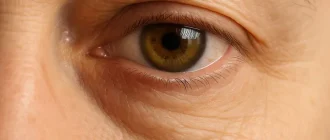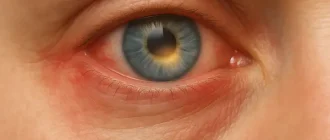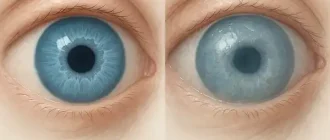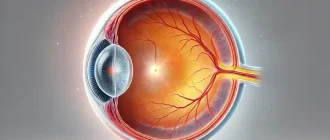Imagine waking up one day and discovering that the vibrant colors of the world have vanished, replaced by an endless grayscale landscape. No, you’re not in an old film noir—this is the reality for those with achromatopsia, a rare condition that robs people of the ability to perceive color. But as much as I’d love to say it’s all black and white, life with achromatopsia is anything but simple.
What is Achromatopsia?
Achromatopsia is a congenital vision disorder where the retina’s cone cells, responsible for color vision, are either missing or malfunctioning. This condition doesn’t just turn the world into an old black-and-white movie; it also brings along a guest list of visual impairments: extreme light sensitivity, low visual acuity, and nystagmus (involuntary eye movements). Because of this, individuals with achromatopsia often see the world in shades of gray.
Let’s break this down into simple terms, shall we?
| Condition | Description |
|---|---|
| Color Blindness | Total inability to perceive colors. Everything is seen in shades of gray. |
| Photophobia | Extreme sensitivity to light. Think of a vampire stepping into the noon sun—instant pain. |
| Low Visual Acuity | Blurry vision. You might be able to make out the big “E” on the eye chart, but that’s it. |
| Nystagmus | Rapid, uncontrollable eye movements. Imagine trying to focus while your eyes are dancing. |
Causes: The Genetic Code That Got Rewritten
Achromatopsia is inherited in an autosomal recessive manner, which means you have to inherit two defective genes—one from each parent—to develop the condition. These genes are usually involved in the proper functioning of the cone cells in your retina. When they go haywire, your ability to perceive color goes down the drain.
Now, let’s take a look at the usual suspects:
| Gene | Role in Vision | Impact When Mutated |
|---|---|---|
| CNGA3 | Controls channels that regulate ion flow | Leads to malfunctioning cone cells |
| CNGB3 | A subunit of the same ion channel | Similar effects as CNGA3 mutation |
| GNAT2 | Involved in visual signal transmission | Disrupts the communication between eyes and brain |
| PDE6C | Regulates cell response to light | Causes the cone cells to shut down completely |
| PDE6H | Affects the functioning of the retina | More of the same retinal havoc |
Living with Achromatopsia: A Daily Struggle
Imagine walking outside on a sunny day and feeling like your eyes are being stabbed by a thousand needles. That’s what light sensitivity feels like for someone with achromatopsia. Sunglasses? A good start, but they often need specially tinted lenses just to make it through the day. Reading or identifying faces? Forget about it—everything is a blur unless it’s up close and personal.
But hey, it’s not all bad news. There are ways to adapt, even if the world isn’t color-coordinated:
- Adaptive Lenses: Special glasses with dark or red-tinted lenses can help reduce light sensitivity.
- Magnification Devices: Larger text and images make reading and recognizing people a bit easier.
- Assistive Technology: Screen readers, voice commands, and other tech can bridge the gap where vision fails.
The Psychological Toll: Coping with a Colorless World
Sure, living in grayscale might sound intriguing—until you realize that it’s not just about missing out on rainbows and sunsets. The psychological impact of achromatopsia can be profound. Individuals may feel isolated, frustrated, or even depressed due to their visual limitations. Social interactions become challenging when you can’t recognize faces or read body language. The world becomes a confusing, uninviting place.
Future Outlook: Is There a Cure?
There’s no cure for achromatopsia right now. But research is ongoing, with gene therapy showing promise in early trials. Scientists are attempting to repair the faulty genes directly in the retina, which could potentially restore some degree of color vision.
Still, until that day comes, those living with achromatopsia continue to navigate their world—a world of shadows, contrasts, and infinite shades of gray. It’s not easy, but with the right support and adaptive strategies, they can still lead full, meaningful lives.
Conclusion
Achromatopsia is more than just living without color—it’s about adjusting to a world that was never designed with you in mind. Every day is a new challenge, but it’s also an opportunity to see the world differently, to find beauty in simplicity, and to adapt in ways most of us never have to. So next time you complain about a cloudy day, remember that for some people, every day is a little cloudy—and yet, they keep moving forward.
Welcome to life in black and white.





